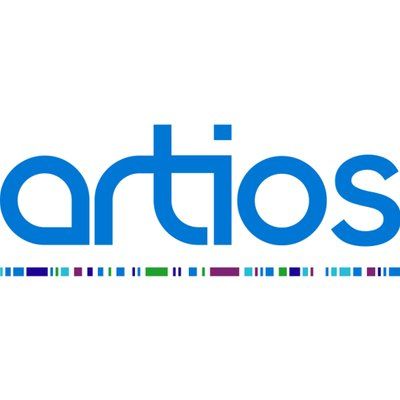预约演示
更新于:2025-05-07
DNA polymerase x POLQ
更新于:2025-05-07
基本信息
关联
34
项与 DNA polymerase x POLQ 相关的药物靶点 |
作用机制 POLQ抑制剂 |
非在研适应症- |
最高研发阶段临床1/2期 |
首次获批国家/地区- |
首次获批日期1800-01-20 |
靶点 |
作用机制 POLQ抑制剂 |
在研机构 |
原研机构 |
非在研适应症- |
最高研发阶段临床1期 |
首次获批国家/地区- |
首次获批日期1800-01-20 |
10
项与 DNA polymerase x POLQ 相关的临床试验NCT06686745
A Phase I, First-in-Human, Multicenter Study to Investigate the Safety, Tolerability, Pharmacokinetics and Preliminary Antitumor Activity of SIM0508 Monotherapy and Combination Therapy in Adult Participants With Locally Advanced/Metastatic Solid Tumors
This is a multicenter, open-label, first-in-human study to evaluate the safety,efficacy, and PK/PD characteristics of SIM0508 as a single agent and in combination with olaparib in participants with locally advanced/metastatic solid tumors.
开始日期2024-12-06 |
申办/合作机构  江苏先声药业有限公司 江苏先声药业有限公司 [+1] |
NCT06666270
A First-in-human, Phase I Study to Evaluate the Safety, Tolerability, Pharmacokinetics, Pharmacodynamics and Preliminary Anti-tumor Activity of SYN818, a DNA Polymerase Theta (POLQ) Inhibitor Alone in Patients with Locally Advanced or Metastatic Solid Tumors
This interventional study will evaluate the safety, tolerability, pharmacokinetics, pharmacodynamics and preliminary efficacy of SYN818 as monotherapy in adult patients with advanced solid tumors
开始日期2024-11-30 |
申办/合作机构 |
CTR20244105
评价SIM0508单药治疗及联合治疗在局部晚期/转移性实体瘤成人受试者的安全性、耐受性、药代动力学和初步抗肿瘤活性的首次人体、开放性、多中心I期研究
主要目的:第1a部分-SIM0508单药治疗的剂量递增:评价SIM0508单药治疗的安全性和耐受性,并确定最大耐受剂量(MTD)/最大给药剂量(MAD)/潜在推荐剂量(RD1)(如有)。
次要目的:进一步确定SIM0508单药治疗或与奥拉帕利联合治疗的安全性和耐受性。
探索性目的:评价SIM0508单药治疗或与奥拉帕利联合治疗的药效学(PD)效应。探索PK与PD、疗效和安全性的潜在相关性。
开始日期2024-11-27 |
申办/合作机构 |
100 项与 DNA polymerase x POLQ 相关的临床结果
登录后查看更多信息
100 项与 DNA polymerase x POLQ 相关的转化医学
登录后查看更多信息
0 项与 DNA polymerase x POLQ 相关的专利(医药)
登录后查看更多信息
238
项与 DNA polymerase x POLQ 相关的文献(医药)2025-06-01·Phytomedicine
Anemarchalconyn, a natural alkyne ketone compound, inhibits HCC cell growth by suppressing Polθ and inducing synthetic lethality in Homologous recombination deficiency cells
Article
作者: Zhou, Tianjie ; Fan, Shasha ; Deng, Wenwen ; Zhang, Xinyang ; Li, Junnan ; Zou, Hui ; Hu, Liqing
2025-05-01·DNA Repair
PARP inhibitors in ovarian cancer: Mechanisms of resistance and implications to therapy
Article
作者: Madhusudan, Srinivasan ; Kulkarni, Sanat ; Seneviratne, Nethmin ; Tosun, Çağla
2025-04-01·European Journal of Medicinal Chemistry
Research progress in DNA damage response (DDR)-targeting modulators: From hits to clinical candidates
Review
作者: Hong, Yimeng ; Peng, Xiaopeng ; Zhou, Yingxing ; Cheng, Binbin ; Wang, Yaping ; Chen, Jianjun ; Zeng, Chunlai ; Ding, Zongbao
27
项与 DNA polymerase x POLQ 相关的新闻(医药)2025-01-21
·小药说药
关注小药说药,一起成长!
前言
合成致死性是一种遗传现象,即单个基因缺陷与细胞存活相容,但两个基因的同时缺陷导致细胞死亡或细胞适应性受损。合成致死性提供了一个独特的机会,可以间接靶向以前被认为“难以成药”的蛋白质,包括携带功能丧失(LOF)突变的关键肿瘤抑制蛋白和由扩增或其他基因组改变引起的过表达致癌蛋白。这些与环境相关的相互作用是癌细胞固有和特异性的,因此提供了选择性靶向这些细胞的机会,同时保留了缺乏相关基因组背景的非癌细胞。
目前,PARP抑制剂已经在BRCA突变癌症患者中获得临床成功。在此推动下,针对DNA损伤反应途径中多种合成致死相互作用的新型药物正在临床开发中,针对跨越表观遗传、代谢和增殖途径改变的合成致死相互作用的合理策略也已出现,并进入临床前和早期临床试验阶段。
靶向合成致死相互作用
DNA损伤反应(DDR)网络可以保持基因组稳定性,抑制复制应激,保护受损的复制叉,并确保高保真DNA复制。DDR成分的遗传性和获得性细胞缺陷与基因组不稳定性的积累有关,导致肿瘤发生和癌症进展。同时,具有这些缺陷的细胞变得依赖于补偿DDR途径生存,从而为合成致命靶向创造了机会。
DNA损伤信号:靶向ATR、ATM和DNA-PK
ATR、ATM和CHK1激酶的抑制剂主要通过抑制必需的细胞周期检查点来利用细胞复制应激,导致过早进入有丝分裂和细胞死亡。ATR是一种丝氨酸/苏氨酸蛋白激酶,属于磷脂酰肌醇3-激酶相关激酶(PIKK)家族。当DNA发生损伤时,ATR被激活,并通过下游信号通路参与DNA损伤的检测、复制叉的稳定和损伤修复;激酶ATM通过调节DDR内下游激酶的活性和控制细胞周期检查点进程,在DNA双链断裂(DSB)的修复中起着关键作用;DNA-PK是另一种磷脂酰肌醇3-激酶相关激酶(PIKK),在DNA损伤部位充当邻近修复蛋白的蛋白质支架,在非同源末端连接(NHEJ)中起着关键作用。许多肿瘤细胞由于DNA修复通路的缺陷,高度依赖这些激酶途径来维持其生存和增殖。因此,ATR、ATM和DNA-PK抑制剂与这些缺陷相结合,可导致肿瘤细胞发生合成致死。
多种ATR抑制剂已处于临床开发中,包括berzosertib、ceralasterib、elimusertib、camonsertib、tuvusertib、ART0380、ATRN-119、ATG-018和IMP9064等;正在临床试验中测试的ATM抑制剂包括AZD1390和双重ATM和DNA-PK抑制剂XRD-0394和M4076,临床开发中的DNA-PK抑制剂包括AZD7648和peposertib。
DNA复制和细胞分裂:WEE1、PKMYT1、CDC7和PLK4
Wee样激酶1(WEE1)通过催化CDK1和CDK2在Tyr15位置的抑制性磷酸化来调节细胞周期通过G2/M和S检查点的进程。WEE1的抑制在G1/S失调的情况下是合成致死的,例如由CCNE1扩增或TP53突变引起的G1/S失调。正在临床试验中测试的WEE1抑制剂包括adavosertib、azenosertib、Debio 0123、IMP7068、SY-4835、SC0191和ATRN-W1051。
蛋白激酶,膜相关酪氨酸-苏氨酸1(PKMYT1)是一种细胞膜相关丝氨酸-苏氨酸蛋白激酶,也调节CDK1和G2/M检查点。功能基因组筛选的数据表明,PKMYT1失活与CCNE1扩增具有合成致死性。此外,除了CCNE1扩增,编码E3泛素连接酶FBXW7基因中的LOF突变和编码PP2A磷酸酶亚基PPP2R1A的基因也可通过PKMYT1抑制靶向。
细胞分裂周期7(CDC7)激酶在触发复制起点激活中起着重要作用。携带功能获得TP53突变的细胞依赖于CDC7依赖性DNA复制,这是由于与致癌转录因子MYB合作促进癌症细胞中的CDC7激活。在携带TP53突变的癌症细胞中,CDC7的药理学抑制诱导选择性衰老,而mTOR信号与CDC7联合抑制在促进凋亡细胞死亡方面非常有效。然而,尽管具有明显的临床前活性,但几种CDC7抑制剂(BMS-863233、TAK-931、NMS-1116354和LY3143921)在早期试验中未能显示出足够的疗效。
Polo 样激酶4(PLK4)是一种调节中心粒生物发生的激酶,中心粒是有丝分裂纺锤体组装和染色体分离所需的中心体的重要组成部分。中心粒周围的蛋白质是另一个关键的中心体成分,受E3泛素连接酶TRIM37的负调控。TRIM37的扩增(通常在神经母细胞瘤和乳腺癌中观察到)导致中心体物质耗竭,从而增加了对中心粒进行有丝分裂纺锤体组装的依赖,并使PLK4抑制在这种情况下成为一种有吸引力的治疗策略。目前,两种PLK4抑制剂CFI-400945和RP-1664正在临床试验中进行测试。
DNA修复:WRN、POLQ和USP1
POLQ和泛素特异性蛋白酶1(USP1)是携带BRCA1/2缺陷的癌症中临床相关的合成致死靶点。POLQ是一种广泛保守的DNA聚合酶,也是DSB修复过程中易出错的MMEJ途径的核心介体。来自几项试验的数据表明,POLQ抑制和BRCA1/2缺乏之间存在合成致死关系,这归因于癌症HRR缺陷(HRD)细胞对MMEJ
DNA修复的高度依赖性。测试各种POLQ抑制剂的早期试验正在进行中,包括ART4215、novobiocin、ART6043和GSK4524101,作为单一疗法或与各种PARP抑制剂联合使用。
USP1是一种去泛素酶,调节关键的范可尼贫血复合物和跨损伤合成底物,同时抑制NHEJ。在BRCA1缺陷细胞中,USP1在复制叉处特别活跃,其与叉DNA结合并被其激活,同时介导叉保护;抑制USP1会导致复制叉失稳、叉保护失败和细胞死亡。KSQ-4279是一种USP1抑制剂,目前正在I期试验中作为单一疗法或与PARP抑制剂或铂类化疗联合使用进行测试。
Werner综合征ATP-依赖性解旋酶(WRN)功能的丧失与癌细胞中的微卫星不稳定性-高(MSI-H)表型具有合成致死关系。WRN敲除已被证明会在MSI-H细胞中诱导广泛的DSBs、细胞周期失调、基因组不稳定和凋亡,但在体外微卫星稳定细胞中不会诱导。WRN抑制剂HRO761和RO7589831均已进入I期临床试验。
靶向合成致死代谢依赖性
代谢重编程是癌症的标志,肿瘤代谢的遗传或表观遗传改变,是调节细胞内自由基积累和维持肿瘤进展所需的生物合成和能量需求增加所必需的。甲硫基腺苷磷酸化酶(MTAP)缺失与PRMT5-MAT2A-RIOK1轴成分耗竭之间具有合成致死关系。MTAP的损失导致5′-甲硫腺苷(MTA)的积累,MTA本身通过竞争PRMT5
S-腺苷甲硫氨酸(SAM)结合袋,成为PRMT5的强效和选择性内源性抑制剂。因此,缺乏MTAP功能的细胞PRMT5甲基化水平降低,对进一步的PRMT5耗竭敏感,导致细胞生长抑制。目前正在临床试验中测试几种MTA协同PRMT5抑制剂,如AMG193、MRTX1719和TNG908,以及MAT2A抑制剂IDE397。
涉及代谢途径的合成致死相互作用还包括氨基酸和核酸代谢途径中的合成剂量致死性关系。例如,FLT3内部串联重复(FLT3-ITDs)是驱动因素,通过激活参与从头丝氨酸生物合成基因的转录因子4(ATF4)依赖性转录调控,赋予丝氨酸生物合成独特的代谢依赖性。在这种情况下,抑制丝氨酸生物合成中第一个也是唯一的限速酶磷酸甘油酸脱氢酶(PHGDH),使用PHGDH抑制剂WQ-2101在FLT3野生型细胞中亚致死的剂量,会导致凋亡诱导。与FLT3野生型细胞系相比,对携带FLT3-ITD突变的细胞系具有显著的抗增殖作用。
靶向表观遗传调控的合成致死策略
染色质调节过程的动态控制对细胞功能至关重要。在多达50%的癌症中检测到与读取、添加或删除表观遗传修饰以及影响染色质调节和组织有关的基因突变。SWI/SNF染色质重塑复合物(CRC)是四个ATP依赖性CRC家族之一,能够通过驱逐、动员或沉积核小体来改变染色质结构。编码SWI/SNF成分的基因突变大多导致功能丧失,在所有人类癌症中发生率高达20%。功能基因组筛查已证明SWI/SNF同源对SMARCA4-SMARCA2、ARID1A-ARID1B、SMARCA4-AMARCB1、SMARCA4-ARID2、SMARCA-4-ACTB和SMARCC1-SMARCC2之间存在合成致死相互作用。
作为表观遗传合成剂量致死性的另一个例子,研究发现SWI/SNF-BRG1-SMARCA4复合物在弥漫性中线胶质瘤患者中与H3K27M突变的表观遗传依赖性。SMARCA4与SOX10在H3K27M突变胶质瘤细胞的调节元件上共定位,以调节参与细胞增殖和细胞外基质的基因表达。H3K27M的功能缺失导致SMARCA4染色质在SOX10和H3K27乙酰化标记的增强子上的结合减少。使用靶向蛋白降解剂或小分子抑制剂靶向SMARCA4,在体外和体内模型中产生了抗肿瘤活性。
小结
合成致死作为一种新兴的肿瘤治疗策略,近年来备受关注。它基于两个非致死性基因同时受到抑制或干扰时,会导致细胞死亡的现象。合成致死的发现为癌症治疗提供了新的思路,推动了相关药物的开发。在合成致死策略中,PARP抑制剂是最成功的案例之一,PARP抑制剂通过抑制PARP的活性,导致DNA损伤无法修复,从而引起肿瘤细胞死亡。目前,PARP抑制剂已被批准用于治疗携带BRCA1或BRCA2基因突变的乳腺癌和卵巢癌。
除了PARP抑制剂,研究人员还在积极探索其他合成致死靶点,如ATR、PRMT5等。这些靶点的抑制剂在克服肿瘤耐药性、提高治疗效果方面显示出良好的潜力。与此同时,人们也正试图通过联合用药策略,如将PARP抑制剂与其他抗肿瘤药物联用,以提高治疗效果。总之,合成致死作为一种具有前景的肿瘤治疗策略,为癌症患者带来了新的希望。随着科研技术的不断发展,相信未来会有更多基于合成致死原理的新型抗肿瘤药物问世,为癌症治疗带来革命性的变革。
参考文献:
1.Synthetic lethal strategies for the
development of cancer therapeutics. Nat Rev Clin Oncol.2025 Jan;22(1):
公众号内回复“ADC”或扫描下方图片中的二维码免费下载《抗体偶联药物:从基础到临床》的PDF格式电子书!
公众号已建立“小药说药专业交流群”微信行业交流群以及读者交流群,扫描下方小编二维码加入,入行业群请主动告知姓名、工作单位和职务。
临床结果临床1期临床研究
2025-01-13
Polθ/POLQ,即DNA聚合酶θ,在双链断裂(DSB)的DNA损伤修复中扮演关键角色,特别是在同源重组(HR)缺陷的肿瘤细胞中,Polθ介导的末端连接(TMEJ)途径成为主要的DNA修复机制;这也是最近几年最热门的合成致死靶点之一,关于这个靶点更详细的介绍参见【合成致死靶点之 POLθ】。
全长Polθ蛋白包含解旋酶结构域(helicase domain)和聚合酶结构域(polymerase domain),这两个结构域对TMEJ活性至关重要。目前在研的Polθ抑制剂按照结合结构域的不同,分为Polθ解旋酶抑制剂和Polθ聚合酶抑制剂。
从已公开的文献/专利推断,在已进入临床研究阶段的Polθ抑制剂中,只有Artios Pharma的ART-6043/ART-4215是聚合酶抑制剂,其他的都是解旋酶抑制剂,包括
GSK/IDEAYA Biosciences的GSK4524101、MOMA Therapeutics的MOMA-313、Repare Therapeutics的RP-3467、圣域生物的SYN818和先声药业的SIM0508。
我们先从聚合酶抑制剂说起。
2022年,Artios Pharma和Repare Therapeutics分别在JMC上披露了Polθ聚合酶抑制剂从Hit优化到in vivo Compound(ART812/RP-6685)的过程。
这两类化合物都结合在Polθ聚合酶Finger subdomain的同一个变构位点,分子骨架也叠合的非常好。(J. Med. Chem. 2023, 66, 6498−6522)
Artios Pharma基于ART812骨架继续进行优化,得到了两个临床化合物ART-6043/ART-4215;而Repare Therapeutics则彻底放弃了RP-6685这类分子,甚至连专利都没有。Repare Therapeutics又选择了什么样的分子骨架呢?且看后文。
我们先来看看Artios Pharma公开的化合物专利情况,他们公开了多篇专利。其中最早的两篇专利是脲类结构,其公开时间原早于上述的JMC文章;在不确定脲类结构是否为临床分子的情况下,只有上海翊石对这类结构也进行了follow改造(绿色标注结构片段即为专利突破点,下同)。
Artios Pharma在2021年公开了3篇化合物专利,其中WO2021028670仅仅保护了如下图中的氘代化合物,再加上后来公开的制备专利WO2022167817,可以确定临床化合物ART-4215即为下图中的氘代化合物。
基于ART-4215结构进行follow的非常之多,先看看内酰胺环这里。内磺酰胺这个思路怎么样,是不是比较容易想到呢,要不也不会有三家一样了。
除了替换,再就是并环的思路了,二氢吲哚这个结构看上去挺好的,丹擎/先声再明/Cyteir/科伦都喜欢。
或者就是微小的改动,其实我挺喜欢武汉人福的设计,非常简单也很巧妙,关键是没有撞车。
并环是永恒的主题,只不过为啥要搞个硒元素上去,个人很不喜欢,就跟那个五氟化硫一样【研发随笔|聊聊晶泰科技与SF5不能说的秘密】。
当然,成大环也是传统艺能了,不过这次只有宇道生物一家想到了这点。
还有些就是跟错了结构系列做了些尝试,不提也罢。
前文提到Artios Pharma有两个临床化合物ART-4215和ART-6043,ART-4215率先进入临床研究(NCT04991480),ART-6043则晚了将近两年,在2023年6月进入一期临床(NCT05898399)。看到这里,有读者肯定想问,Artios为啥搞了两个分子上临床?我也不知道啊,也没查到官方披露啥信息。不过,现在Artios Pharma网站上的Pipeline只有ART-6043,而ART-4215则不见了踪影。上面follow ART-4215的同学不知道有何感想,有没有在实验中发现了什么问题呢。
那ART-6043的可能结构又是什么呢,Artios Pharma在23/24年又公开了5篇化合物专利,从结构上看,都是在ART-4215的基础上成了八元环、并进行了衍生化,部分专利连接了共价弹头;看了下PDB(7ZX1),这样的变化还挺合理的。而ART-6043则可能就是WO2023067356中的Example 1,也是这篇专利唯一的结构;就像ART-4215所在的专利WO2021028670一样,同样只保护了一个化合物结构。
因为上述专利公开的较晚,所以目前为止还没有看到follow这类三并环结构的专利公开。但是,却看到几篇有共价弹头的专利,不过也跟上述三并环结构关系不大;
更多的是基于两篇JMC文章中ART812/RP-6885结构的拼合思路(Avelos Therapeutics/中国药科大学)。考虑到JMC文章明确了两类结构结合在相同的Finger subdomain、都有相应的PDB文件Release,再加上部分结构相似度较高,实在无法理解这种拼合思路的专利为啥这么少。
除了Artios Pharma之外,其他非follow的开发Polθ聚合酶抑制剂的还有Recombination Therapeutics、AstraZeneca和IDEAYA Biosciences。依据Recombination Therapeutics发表的文章(Nature Communications | (2024) 15:2862),其结构也是结合在fingers domain的变构位点,并且分子结构上和Artios Pharma的ART-4215及Repare Therapeutics的RP-6685都有相似之处。AstraZeneca的嘧啶并咪唑类结构的结合位点未知。
IDEAYA Biosciences公开了四篇Polθ聚合酶抑制剂专利,第一篇专利(WO2020160134)分子结构和Artios Pharma的JMC文章中的HIT分子相似度极高,第四篇专利(WO2022026565)分子结构也和Artios Pharma的ART812非常相似。再加上从时间上来看,也不存在follow的可能性,难道又出现了益方生物和Mirati这样说不清道不明的情况了么?【Kras G12D, 益方生物, Mirati, 记录一下】考虑到IDEAYA和Artios都有详细的结构衍化过程,所以这里笔者认为大概率是撞车了:HIT结构撞车、优化思路撞车。杭州圣域生物对此类链状结构进行了follow,在此不表。
IDEAYA Biosciences没有对上述的Polθ聚合酶抑制剂进行深入的优化探索,而是转向了解旋酶抑制剂。考虑到WO2023233295/WO2024121290两篇前药专利有详细的活性数据和体内单用/联用药效,临床化合物GSK4524101大概率来源于这两篇专利中。
基于IDEAYA解旋酶抑制剂的follow也不少。首先是在原研噻二唑单环的基础上并环,这样的思路还是挺热门的,至少下面八篇专利都是这样的思路。专利之间是否有专利撞车的问题,我就懒得分析了,有需要的自己看看吧。
另外一类结构改造思路则是在噻二唑环的取代上,详见下图。有意思的是北京丹擎的两篇follow专利(WO2023060573/WO2023061415)优先权日在前,其通式把IDEAYA专利(WO2023067515)部分化合物给覆盖了。由于国内follow的越来越卷,越来越快,经常能看到国内follow专利的通式把国外原研的或follow的专利给覆盖了的情况。
另外,如前所述,Repare Therapeutics放弃了JMC文章中的酰胺-炔系列分子,转而follow了IDEAYA的专利,突破点也还是炔基。其临床分子RP-3467可能就是下图专利中的113。
然后,我们在南京再明(先声)的专利中又看到了炔基;北京丹擎的噻二唑酮则让人眼前一亮。成都微芯的思路值得说道说道:他们的专利突破点在于把结构中的吡啶环改变为吡啶酮环,但这样可以突破原研专利么?
相关的IDEAYA Biosciences专利有三篇,其中关于结构中吡啶环位置的定义类似,我们以第一篇专利(WO2020243459)为例说明:下图的A即为分子中吡啶部分,A包括了5-10元的杂芳环。
再来看下专利中对于“杂芳环”的定义:
那接下来的问题就是,按照上述“杂芳环”定义,吡啶酮涵盖在内么?
按照一般有机/药化的理解,吡啶酮算是杂芳环,但是从专利角度,这里该如何判别呢?这是否属于本领域技术人员的公知呢?欢迎留言发表你的看法。
最后,关于Polθ抑制剂,自己还有几个疑问,在此记录一下:
<1>Artios Pharma的ART-4215因为什么原因从官网Pipeline上消失了?
<2>聚合酶抑制剂和解旋酶抑制剂从生物机制、动物体内效果、最终临床有效性上会有什么差别么?哪一个才是更好的选择呢?
<3>从体内药效结果来看,Polθ抑制剂单用无效,需要和PARP抑制剂联用。Polθ抑制剂的角色更像是PARP抑制剂的增强剂,这一定位让我想起了肿瘤免疫治疗领域,作为PD-1增强剂的无数先烈们。Polθ抑制剂的命运又将会如何呢?
2024-11-21
·医药观澜
▎药明康德内容团队报道
2024年,中国创新药研发领域的交易持续活跃。在这一背景下,一些优秀的生物技术新锐凭借其创新药产品成功促成了国际交易,不仅为企业注入了可观的现金流,更有望加快其在研产品在全球的研发进程。湃隆生物(Apeiron Therapeutics)也是参与这一进程的创新药研发新锐企业之一。
自2019年成立以来,湃隆生物一直专注于开发精准治疗药物,致力于解决患者未满足的临床需求。今年7月,该公司与英国知名公司Exscientia达成了一项重要合作,将其在研高选择性口服CDK7抑制剂GTAEXS617项目的后续开发权益全部转让给后者。GTAEXS617是双方共同研发的创新药,正处于1/2期临床试验阶段,而此次交易的潜在价值超过1亿美元。
对于此次合作,湃隆生物首席执行官(CEO)李铭曦博士说:“此次交易主要基于两方面的考量:一方面是我们自身战略的调整,我们决定更加聚焦于具有重大潜力的“合成致死”研发领域,以便将资源更有效地集中在这些管线的开发上;另一方面,考虑到GTAEXS617的临床开发目前主要在欧洲进行,交给Exscientia将能够更高效地推进项目的研发进程。”
紧接着,在11月19日,湃隆生物再次传来捷报。其自主研发的MTA/PRMT5抑制剂GTA182的1a/b期研究成功完成首例患者入组。该研究旨在评估GTA182在多个剂量递增下的安全性、疗效和药代动力学特性,适用于有MTAP缺失的晚期实体瘤成年患者,作为单药疗法或与标准治疗联合用药。这是该公司在“合成致死”研发领域取得的一个里程碑进展。
近期,我们特别邀请到了湃隆生物掌舵人李铭曦博士,请他分享此次交易背后的考量、他对“合成致死”新药研发领域的展望,以及授权交易趋势对行业的影响等话题。作为生命科学领域的投资人和创业者,李铭曦博士拥有丰富的跨境投资、项目孵化经验,更对生物医药行业的发展趋势有着自己的深刻见解。
图片来源:湃隆生物提供,药明康德内容团队制作
药明康德内容团队:祝贺湃隆生物自主研发的MTA/PRMT5抑制剂GTA182的1a/b期研究成功完成首例患者入组。您如何看待PRMT5这个靶点的临床潜力?GTA182目前展示出了哪些独特优势?
李铭曦博士:PRMT5靶点抑制剂被认为是继PARP抑制剂之后下一波有希望的“合成致死”疗法之一。事实上针对该靶点的研发已有多年历史,第一代基于SAM和(或)底物进行设计的PRMT5抑制剂有较高的血液毒性,限制了临床开发。目前业界在开发的是MTA协同的第二代PRMT5抑制剂,其能够特异性针对甲硫腺苷磷酸化酶(MTAP)缺失的肿瘤患者,提升安全性。数据表明,大约在10%-15%的实体瘤中,MTAP常与抑癌基因CDKN2A发生共缺失现象,这是一个较高的比例,意味着PRMT5抑制剂有非常大的潜在患者人群。
近两年已经进入临床的几个PRMT5制剂陆续公布了临床数据,初步验证了二代PRMT5抑制剂没有一代药物的血液毒性,并在多个适应症中展现初步的疗效,包括非小细胞肺癌、胰腺癌、胆管癌、黑色素瘤等。这是非常令人振奋的新进展,也让我们更有信心把GTA182尽快推向临床。
从临床前的数据来看,GTA182在成药性质、药代动力学(PK)等方面表现出更好的优势,并在临床前的动物模型中展现出更大的治疗窗口。另外,GTA182具有良好的透过血脑屏障的能力,在体内临床前模型中显示出对肿瘤生长的抑制和缩小作用,未来有望应用于包括胶质母细胞瘤(GBM)、肺癌脑转移等患者。
药明康德内容团队:目前湃隆生物更加聚焦“合成致死”领域的新药开发。在您看来,合成致死机制未来的机会在哪里,您更加关注哪些靶点?
李铭曦博士:“合成致死”领域在医学界已经取得了诸多突破,比如大家熟知的PARP抑制剂的成功,是合成致死概念下最早成药的一个靶点。近年来该领域涌现出非常多的新靶点,且有相应的药物陆续进入临床,比如PRMT5、POLQ、PARG、USP1、MAT2A、WEE1、ATR、WRN等等。“合成致死”是一个广阔的领域,我认为这个概念下一定会有很多产品成功上岸,造福患者。
我们内部看每个靶点,都是从临床需求出发,研究特定靶点的生物学机制,以及有望在临床中造福哪类患者,从而制定相应的开发策略。同时我们也看到,一些分子进入到临床开发之后会面临一些瓶颈,比如单药疗效不佳,需要探索联合用药策略来提升疗效,这也是该领域的机会和方向。
药明康德内容团队:请问湃隆生物在“合成致死”领域的新药开发计划是怎样的?未来3~5年,公司有望迎来哪些重要进展?
李铭曦博士:湃隆生物目前聚焦在合成致死领域,以开发抗肿瘤新药。其中PRMT5抑制剂GTA182刚刚进入临床,未来我们会在中国先启动剂量爬坡的研究,然后再考虑全球开发,接下来该产品有望进入剂量扩展研究阶段。我们还有一款基于合成致死机制的KIF18A抑制剂正在进行先导化合物优化,希望能够在明年对该产品申报IND。此外,湃隆生物对外授权合作的CDK7抑制剂GTAEXS617有望在未来一段时间内取得初步的临床疗效数据。
药明康德内容团队:湃隆生物今年7月出售了CDK7抑制剂权益。能否分享为什么您会选择这样做?
李铭曦博士:主要是两方面的考量。一方面是湃隆生物自身战略的调整,我们决定更加聚焦在具有重大潜力的“合成致死”管线上,以便将资源更有效地集中在这些管线的开发上。另一方面,从临床开发的角度,GTAEXS617是一款经过“精确设计”的CDK7抑制剂,有复杂的生物标志物假设,它的临床开发目前主要在欧洲进行。Exscientia作为一家英国公司,由他们全权负责这款产品的临床开发,将能够更高效地推进项目的研发进程。同时湃隆生物保留了该产品的部分权益,未来我们也有机会获得商业上的回报。
药明康德内容团队:近两年中国创新药领域的授权交易成为行业趋势之一,您认为背后的因素有哪些?
李铭曦博士:没错,近期我们看到越来越多中国公司研发的创新药实现授权合作,或者以公司并购、NewCo等方式与国际大药企达成合作。我认为这一趋势背后有3个重要因素:
其一毋庸置疑是国际大药企对于中国创新药的广泛认可。从近两年的交易可以看到,无论是首付款还是交易总金额,相较于过去都有显著提升。这也反映了中国创新药正在加速融入整个全球生物医药创新生态。
第二点,我觉得这个趋势也是水到渠成的,是中国创新药多年积累的成果。过去十多年,中国创新药领域有大量的资源投入,也有很多科学家的不懈努力,从而使我们能够产生目前的创新成果。尤其我们可以看到一些交易金额较高的临床前项目,它们代表着当下热门的研究领域,或者是近期刚刚在科学研究上取得突破的靶点、机制。这些产品获得国际认可,也代表着中国公司在创新速度方面的全球性能力。
第三,由于资本市场近期面临一些挑战,很多新兴公司需要从战略角度重新考量和规划其管线布局。由于体量较小,这些公司往往没有足够的资源同时推进所有产品的研发。而通过授权合作将部分资产交由大公司,可以加速其研发进程,以更早惠及患者。所以这是一个双赢的选择。
药明康德内容团队:您如何看待新药授权对行业发展的积极影响?
李铭曦博士:它的影响是多方面的。首先,授权合作为公司带来了可观的现金流,能够有力支持公司去开拓或者是发展自己管线里的其他产品。其次,从公司长远发展的视角来看,新兴公司在初创阶段往往缺乏足够的临床运营能力和经验,通过与大药企合作,或者是通过NewCo模式与国际投资机构合作,这些公司能够更有效地配置资源,更快推进产品的临床开发进程,同时这也是积累国际化经验的积极尝试。展望未来,可以预见这些中国药企的全球化程度也会日益加深。
此外,无论是大型药企还是NewCo模式下的国际投资团队,他们对于数据质量都有着极高极严格的要求。随着新药授权交易趋势的加强,创新药企会更多地考虑与高质量、声誉好的CXO公司合作。从趋势上来看,我认为这对头部CXO公司来说是有利的。
药明康德内容团队:展望未来几年,您预期中国创新药授权的趋势会发生哪些变化?
李铭曦博士:近年来,我们已经观察到诸多新的趋势,比如越来越多的新分子类型(New Modality)产品达成国际授权合作,这说明中国创新药企正在积极拥抱这些创新的药物类型和技术,并且整体创新水平正在接近国际前沿。疾病领域方面也在发生变化,从昔日主要集中在肿瘤领域,扩展到如今的肿瘤、自身免疫性疾病、代谢性疾病等多个领域的全面开花。
展望未来数年,我认为授权合作的趋势会随着国际大药企的战略调整而变化。随着核心产品专利到期,一些国际药企会更有动力通过授权合作的形式布局新的技术、靶向、药物类型等。同时,创新趋势会随科学发现和转化研究的新进展持续变迁,而人类生活习惯变化导致的疾病谱变化也会影响临床需求,这些因素都可能影响授权合作的趋势变化。以近期热门的T细胞接合器(T cell-engager,TCE)在自身免疫疾病领域的应用为例,过往业界开发TCE通常用于治疗癌症,而随着科学研究的突破,这类产品在自免领域的前景正在放大。
从合作模式角度,我认为未来药企之间共同开发模式的比例会进一步上升。随着资本市场的好转,或许授权合作热度会稍稍下降。而对于有实力的医药企业,还是会更愿意与国际大药企一起参与到创新药的全球开发过程中,这是他们的产品未来走向全球必不可少的经历。
药明康德内容团队:您还有哪些个人的观点或深刻感受,特别希望与业界分享?
李铭曦博士:近几年整个生物医药行业感受到所谓“寒冬”,但我个人觉得这反而是一个很好的转型变革机会,对于中国生物医药产业的长远发展是好事。第一,这促使众多科学家创业者认识到,Biotech公司的创业是高风险的,它对于科学、团队、经营、现金管理等都有非常高的要求;第二,这也使众多投资人经受了周期的洗礼,让他们深刻理解到生物医药行业“高投入、高风险、高回报、长周期”等特质,从而推动中国生物医药投资生态的成熟和进步;再者,这一周期挑战也将极大提升创新药研发领域的资源使用效率,不仅仅是资金,还包括临床资源、CXO资源等关键要素;第四,在这种行业周期的锤炼之下,我们也看到了中国生物医药行业展现出了极大的韧性。我相信,那些能够经历周期考验并最终成长起来的创新生物医药企业,一定会诞生出具有光明前景的伟大公司。
本文来自药明康德内容团队,欢迎个人转发至朋友圈,谢绝媒体或机构未经授权以任何形式转载至其他平台。转载授权及其他合作需求,请联系wuxi_media@wuxiapptec.com。
免责声明:药明康德内容团队专注介绍全球生物医药健康研究进展。本文仅作信息交流之目的,文中观点不代表药明康德立场,亦不代表药明康德支持或反对文中观点。本文也不是治疗方案推荐。如需获得治疗方案指导,请前往正规医院就诊。
临床研究临床1期临床申请
分析
对领域进行一次全面的分析。
登录
或

Eureka LS:
全新生物医药AI Agent 覆盖科研全链路,让突破性发现快人一步
立即开始免费试用!
智慧芽新药情报库是智慧芽专为生命科学人士构建的基于AI的创新药情报平台,助您全方位提升您的研发与决策效率。
立即开始数据试用!
智慧芽新药库数据也通过智慧芽数据服务平台,以API或者数据包形式对外开放,助您更加充分利用智慧芽新药情报信息。
生物序列数据库
生物药研发创新
免费使用
化学结构数据库
小分子化药研发创新
免费使用


